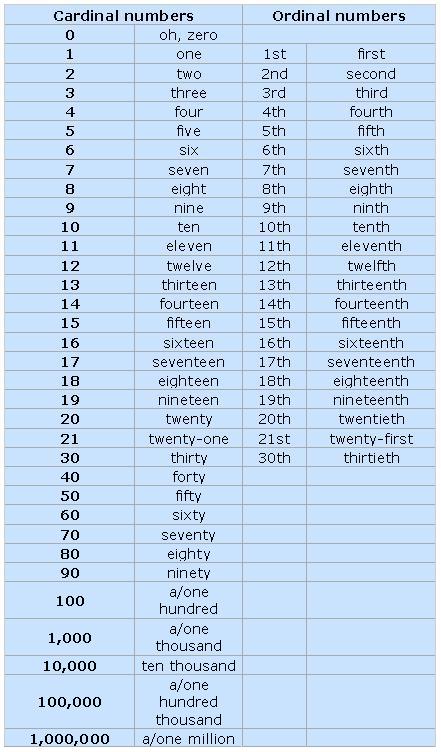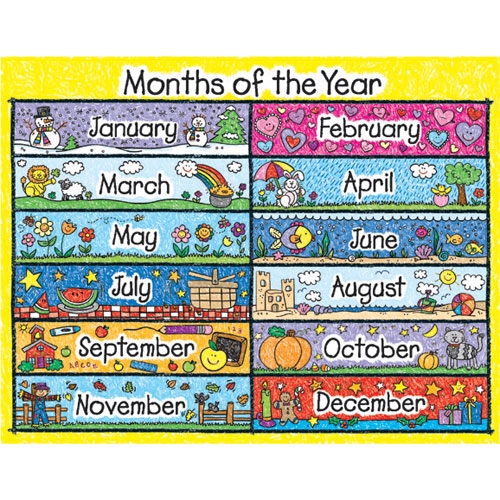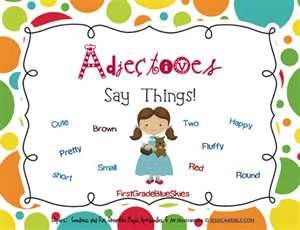- APPEARANCE: ASPECTO
- ATTRACTIVE: ATRACTIVO
- AVERAGE BUILD: DE CONSTITUCIÓN MEDIA
- BALD: CALVO
- BEARD: BARBA
- BEAUTIFUL: GUAPA, GUAPO
- BEAUTIFUL: HERMOSO
- BIRTHMARK: MARCA DE NACIMIENTO
- BLACK HAIR: CABELLO NEGRO
- BLOND, FAIR: RUBIO
- BLOND, FAIR HAIR: CABELLO RUBIO
- BRACES: APARATO DE ORTODONCIA
- BRAID: TRENZA
- BROWN HAIR: CABELLO CASTAÑO
- BURNED: QUEMADO
- CURLY HAIR: CABELLO RIZADO
- DARK: MORENO, OSCURO
- DARK HAIR: CABELLO OSCURO
- DISABLED: MINUSVALIDO, DESCAPACITADO
- ELEGANT, SMART: ELEGANTE
- FAT: GORDO
- FRECKLES: PECAS
- GOOD-LOOKING: GUAPO
- GREY HAIR: CABELLO CANOSO
- HAIR: PELO
- HANDSOME: GUAPO, (SOLO PARA HOMBRES)
- HANDSOME: APUESTO, GUAPO
- INTELLIGENT: INTELIGENTE
- LAME: COJO
- LIGHT HAIR: CABELLO CLARO
- LONG HAIR: CABELLO LARGO
- MAIMED: MUTILADO
- MEDIUM HEIGHT: DE ESTATURA MEDIA
- MOLE: LUNAR
- MOUSTACHE: BIGOTE
- MUSCULAR: MUSCULOSO
- OBESE: OBESO
- OLD: VIEJO
- ONE-EYED: TUERTO, OJITUERTO
- OVERWEIGHT: CON SOBREPESO
- PALE: PÁLIDO
- PLAIN, UNATTRACTIVE: POCO ATRACTIVO
- PLUMP: REGORDETE
- PRETTY: BONITA
- RECEDING HAIR: CON ENTRADAS
- REDHEAD: PELIRROJO
- SCAR: CICATRIZ
- SCRUFFY, UNTIDY-LOOKING: DESALIÑADO
- SHORT: BAJO
- SHORT HAIR: CABELLO CORTO
- SIDEBOARDS: PATILLAS
- SKINNY, THIN: FLACO
- SLENDER: ESBELTO
- SLIM, THIN: DELGADO
- SQUINT: ESTRABISMO, BIZCO
- STOCKY, STOUT: CORPULENTO
- STRAIGHT HAIR: CABELLO LACIO
- TALL: ALTO
- TANNED: BRONCEADO
- TATTOO: TATUAJE
- TINY: PEQUEÑO
- UGLY: FEO
- WART: VERRUGA
- WELL-BUILT: FORNIDO
- WELL-DRESSED: BIEN VESTIDO
- WHITE HAIR: CANAS
- WRINKLE: ARRUGA
- YOUNG: JOVEN
PHYSICAL DESCRIPTIONS

|
face = la cara/el rostro
|
|
|
facial features |
rasgos |
| she has a thin face | tiene la/una cara delgada |
| an oval face | una cara ovalada |
| a round face | una cara redonda |
| clean-shaven | bien afeitado |
| a bloated face | una cara hinchada/abotagada/abotargada |
| a cherubic face | una cara angelical |
| a chubby face | una cara regordete |
| chubby-cheeked | mofletudo |
| a chubby/podgy face | una cara rechoncha, regordete, gordinflona |
| he had a weather-beaten face | tenía un rostro curtido |
| a face lift | un lifting, un estiramiento facial |
| she has freckles | tiene pecas, es pecosa |
| spots/pimples | granos |
| blackheads | espinillas |
| moles | lunares |
| warts | verrugas |
| wrinkles | arugas |
| rosy cheeks | mejillas sonrosadas |
| acne | acne |
| a birthmark | un antojo/una mancha de nacimiento |
| a double chin | una papada |
| hollow cheeks | las mejillas hundidas |
| a dimple | un hoyuelo |
| smooth-cheeked/smooth-faced | lampiño |
| a deadpan face | una cara de póquer/de palo |
| a doleful face | una cara compungida |
| a sad face | una cara triste |
| a serious face | una cara seria |
| a smiling face | una cara sonriente |
| a happy face | una cara alegre |
| smooth-cheeked/smooth-faced | lampiño |
| to go red in the face (with anger/heat) | ponerse colorado/rojo |
| to go red/to blush (with embarassment) | sonrojarse/ruborizarse |
| he looks worried | parece preocupado |
| frightened | asustado |
| surprised | sorprendido |
| a smile | una sonrisa |
| a smirk | una sonrisita |
| a frown | el ceño fruncido |
|
nose = la nariz
|
|
| a bulbous nose | una nariz protuberante |
| a hooked nose | una nariz aguileña |
| a big nose | una nariz grande |
| a turned-up/snub nose | una nariz respingona |
| a pointed nose | una nariz puntiaguda |
| a flat nose/a pug nose | una nariz chata |
| a lopsided nose | una nariz ladeada/torcida |
| a hooter/conk (colloquial Br. Eng.) a schnozzle (colloquial Am. Eng.) |
una napia |
| to flare your nostrils/to snort | resoplar/bufar |
|
eyes = los ojos
|
|
| she has brown eyes | tiene los ojos marrones |
| hazel | color avellana |
| he has beady eyes | tiene los ojos redondos y brillantes como cuentas |
| a black eye | un ojo morado |
| red eyes | ojos rojizos |
| bloodshot eyes | ojos sanguinolentos/injectados de sangre |
| to wink | guiñar el ojo |
| to blink | pestañear/parpadear |
| she is cross-eyed | es bizca |
| a squint | una bizquera, un estrabismo |
| she's blind | es ciega |
| he's blind in one eye | es tuerto |
| to go blind | quedarse ciego |
| crow's feet | patas de gallo |
| sunken eyes | ojos hundidos |
| piggy eyes | ojitos redondos y brillantes |
| bulging eyes | ojos saltones |
| slit/slanting eyes | ojos achinados |
| a stye | un orzuelo |
| shifty eyes | ojos furtivos |
|
eyebrows = las cejas
|
|
| arched eyebrows | cejas arqueadas |
| bushy eyebrows | cejas tupidas |
| thick eyebrows | cejas pobladas |
| to raise your eyebrows | arquear las cejas |
|
eyelashes = las pestañas
|
|
| false eyelashes | pestañas postizas |
|
mouth
|
|
| harelip | labio leporino |
| chapped lips | labios agrietados |
| buckteeth | dientes de conejo/dientes salidos |
| false teeth | dentadura postiza |
| front teeth | paletas/dientes de adelante |
| wisdom teeth | muelas del juicio |
| to chatter (teeth) | castañetear |
| my teeth are chattering | me castañetean los dientes |
|
hair = el pelo/cabello
|
|
| she has blond hair | tiene el pelo rubio |
| auburn | castaño rojizo |
| she has grey hair | es canosa, tiene el pelo canoso, tiene canas |
| mousy hair | el pelo castaño desvaído |
| she's red-haired/red-headed | es pelirrojo |
| a brunette | una morena |
| streaks | mechones |
| highlights | mechitas/reflejos/claritos |
| dyed hair | el pelo teñido |
| long hair | el pelo largo |
| short hair | el pelo corto |
| shoulder-length hair | el pelo hasta los hombros |
| curly hair | el pelo rizado |
| wavy hair | el pelo ondulado |
| frizzy hair | el pelo crespo |
| spiky hair | el pelo de punta |
| she has permed hair | se ha hecho un permanente |
| crimped hair | pelo rizado con tenacillas |
| straight hair | el pelo liso |
| a fringe | un flequillo |
| a parting | una raya |
| a pigtail | una trenza |
| a ponytail | una cola |
| bunches | coletas |
| a bun | un moño |
| lank hair | el pelo lacio |
| dull | sin brillo |
| greasy hair | el pelo graso/grasoso |
| fine | fino |
| she has thick hair | tiene mucho pelo/tiene el pelo grueso |
| dry | seco |
| shiny hair | el pelo brillante |
| split ends | las puntas abiertas |
| dandruff | la caspa |
| a pageboy | un peinado/corte a lo paje |
| a bob | una melena |
| a hairdo | un peinado |
| a crew cut | un pelo cortado al rape |
| sideburns | patillas |
| a wig | una peluca |
| a toupée | un peluquín, un tupé |
| bald | calvo |
| a bald patch | una calva/una pelada |
| he's balding | se está quedando calvo |
|
build = complexión
|
|
| thin | delgado |
| she’s got a very good figure | tiene una figura estupenda |
| plump (a nicer way of saying fat) | gordito |
| slim | esbelto |
| fat | gordo |
| a beer belly | una panza |
| chubby | regordete/gordinflón/rellenito |
| strong | fuerte |
| weak | flojo |
| short | bajo |
| tall | alto |
| a hunchback | un jorobado |
| he walks with a limp | cojea |
| medium height | de estatura media |
| medium build | de talla media |
| he's a large man | es un hombre corpulento |
|
General Terms
|
|
| handsome, good-looking, attractive | guapo |
|
pretty, good-looking, attractive, lovely |
guapa, bonita, linda, |
|
he’s quite a hunk |
está buenísimo |
| ugly | fea/feo |
| beautiful | preciosa, guapísima, lindísima, hermosa, bella |
|
Other notes
|
|
|
He looks a bit ______ In Spanish "tiene pinta de ____" is very common for giving a general idea about the appearance. See examples on the right: |
tiene pinta de delincuente: he looks like a criminal tiene pinta de extranjero he looks a bit foreign |
|
He looks sad |
parece triste |
| a strong- looking man | un hombre de apariencia fuerte |
| clean-shaven | bien afeitado |
PRESENT PROGRESSIVE
Present Progressive
Notes:
- The written lesson is below.
- Links to quizzes, tests, etc. are to the left.
The present progressive is formed by combining the verb "to be" with the present participle. (The present participle is merely the "-ing" form of a verb.)
I am studying.
I am studying with María.
In English, present progressive can be used to describe what is happening now, or what will happen in the future.
I am studying now.
I am studying with María tonight.
In Spanish, the present progressive is only used to describe an action that is in the process of taking place. It is not used for future actions.
I am studying now.
(use present progressive)I am studying with María tonight.
(do not use present progressive)
To form the present progressive in Spanish, combine a form of "estar" with the present participle.
Estoy hablando.
I am speaking.Juan está comiendo.
John is eating.María está escribiendo una carta.
Mary is writing a letter.
In order to form the present progressive, you must know how to conjugate the verb estar, and how to form the present participle. You already know how to conjugate the verb estar:
estar
estoy
estás
está
estamos
estáis
están
To form the present participle of regular -ar verbs, add -ando to the stem of the verb.
hablar: hablando
(hablar - ar + ando)trabajar: trabajando
(trabajar - ar + ando)estudiar: estudiando
(estudiar - ar + ando)
To form the present participle of regular -er and -ir verbs, add -iendo to the stem of the verb.
comer: comiendo
(comer - er + iendo)hacer: haciendo
(hacer - er + iendo)vivir: viviendo
(vivir - ir + iendo)escribir: escribiendo
(escribir - ir + iendo)
To form the present participle of -ir stem changing verbs, change e:i and o:u in the stem, and then add -iendo to the stem of the verb.
servir: sirviendo
pedir: pidiendo
decir: diciendodormir: durmiendo
morir: muriendo
poder: pudiendo
Sometimes when forming the present participle it is necessary to change the spelling of a word so that it agrees with the way it is pronounced. We call this an "orthographic" change. Here are some common examples:
caer: cayendo
creer: creyendo
huir: huyendo
ir: yendo
influir: influyendo
oír: oyendo
traer: trayendo
leer: leyendo
seguir: siguiendo
The following examples illustrate the rules for forming the present participle.
hablar: hablando (-ar)
comer: comiendo (-er)
vivir: viviendo (-ir)
decir: diciendo (e:i)
dormir: durmiendo (o:u)
leer: leyendo (orthographic)
seguir: siguiendo (orthographic)
To form the present progressive, simply conjugate the verb estar to agree with the subject of the sentence, and follow it with the present participle.
Juan está comiendo pan.
John is eating bread.María y Carmen están hablando con nosotros.
Mary and Carmen are speaking with us.
Remember, only use the present progressive for actions that are "in progress." Compare the uses of the present indicative with the uses of the present progressive.
Estudio español. (Present Indicative)
I study Spanish.
I am studying Spanish (these days).
I do study Spanish.Estoy estudiando español. (Present Progressive)
I am studying (right now, at this moment) Spanish.
It is important to remember that you would never use the present progressive to say something like "We are going to Spain this summer." Use present progressive only for actions that are "in progress."
Let's add two more verb flashcards: one for present progressive and one for practice in forming the present participle
Present Progressive
estar + present participle
I am speaking (right now, at this moment)
Never use present progressive for something that will occur in the future.
Present Participle (-ando, -iendo, yendo)
hablar - hablando (-ar)
comer - comiendo (-er)
vivir - viviendo (-ir)
decir - diciendo (e:i)
dormir - durmiendo (o:u)
leer - leyendo (orthographic)
seguir: siguiendo (orthographic)
PERSONAL INFORMATION WH QUESTIONS
Names
What is your name?
My name is _______.
What is your surname / last name?
My surname / last name is _______.
Do you have a nickname?
Yes, my nickname is _______ or No, I don't.
Work & Occupation
What do you do?
I am a _______.
Where do you work?
I work at _______.
Do you like your job?
Yes, I do. or No, I don't.
Why do you like your job?
I like my job because _______.
Marital Status
Are you married / single?
Yes, I am. or No I'm not.
Do you have a boyfriend / girlfriend?
Yes, I do. or No, I don't.
What is your partner's name?
My partner's name is _______.
Family
Do you have any children?
Yes, I have _______ children. or No, I don't
What are their names?
Their names are _______.
How many brothers and sister do you have?
I have _______ brothers and _______ sisters.
Age
How old are you?
I am _______ years old.
When is your birthday?
My birthday is on the _______ of _______.
Where were you born?
I was born in _______.
Contact Information
Where are you from?
I am from _______.
What is your address?
My address is _______.
What is your phone number?
My phone number is _______.
What is your cell phone number?
My cell phone number is _______.
Do you live with your parents?
Yes, I do. or No, I don't.
Do you live alone?
Yes, I do. or No, I don't.
Who do you live with?
I live with my _______.
Do you live in a house or an apartment?
I live in a/an _______.
What is your e-mail address?
My e-mail address is _______.
Free time activities
What do you do in your free time?
In my free time I _______.
What are your hobbies?
My hobbies are _______.
What type of music do you like?
I like _______ music.
Do you have a favourite singer or group?
My favourite singer / group is _______.
What types of movies do you like?
I like _______ movies.
Do you like to read?
Yes, I do. or No, I don't.
What do you like to read?
I like to read _______.
Habits
Do you have any bad habits?
Yes, one of my bad habits is _______.
Do you snore?
Yes, I do. or No, I don't.
Do you smoke?
Yes, I do. or No, I don't.
How many cigarettes do you smoke a day?
I smoke _______ cigarettes a day.
Other Personal Information
What is your favourite food?
My favourite food is _______.
Is there any food that you do not like?
Yes, I don't like _______. or I like all food.
What is your favourite colour?
My favourite colour is _______.
Why do you want to learn English?
I want to learn English because _______.
What languages do you speak?
I speak _______.
Do you have any pets?
Yes, I do. or No, I don't.
What pets do you have?
I have _______.
What are their names?
Their names are _______.
Which sports do you like?
The sport I like is _______.
Do you have a favourite team?
My favourite team is _______.
What is something you do well?
I am good at _______.
What is something you do not do well?
I am bad at _______.
Are you romantic?
_______ romantic.
Do you have any tattoos?
Yes, I do. or No, I don't.
Describe yourself using only two words.
I am _______ and _______.
What makes you happy?
I am happy when _______.
Are you a good cook/singer/driver?
Yes, I do. or No, I don't.
The structure of the question may be very different to your own native languages but there are rules concerning the structure of sentences in English.
For more information regarding the correct use of the question words such as What, Where, How andWhen refer to our student notes on Question Words.
For more information regarding the correct us of do/does in questions refer to our student notes on Do vs. Does.
With just a little practice you can become very good at asking and answering these basic questions with any native English speaker. Try them the next time you meet an English speaker and you may make a new friend.



.jpg)




.jpg)
.jpg)

